There are 10 top-level clauses (headings) in ISO 9001. Below those headings are 56 sub-clauses that each define over 300 individual requirements.
Contents
- What Are The ISO 9001 Clauses?
- 1. Scope 2. References 3.Terms and Definition
- 4. Context of the organization
- 5. Leadership
- 6. Planning
- 7. Support
- 8. Operation
- 9. Performance Evaluation
- 10. Improvement
- Are The ISO 9001 Clauses Also Requirements?
- The Seven Mandatory Clauses
- Are There Any Exceptions?
- How Have The ISO 9001 Clauses Changed Over The Years?
The current 2015 revision of ISO 9001 contains a total of 10 headings or clauses, with 7 of them containing the 'mandatory' requirements (Clauses 4 to 10).
The first three clauses provide general information but they are no less important.
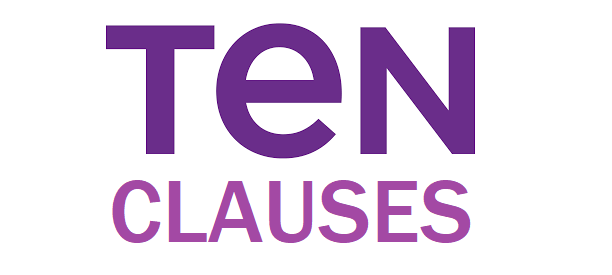
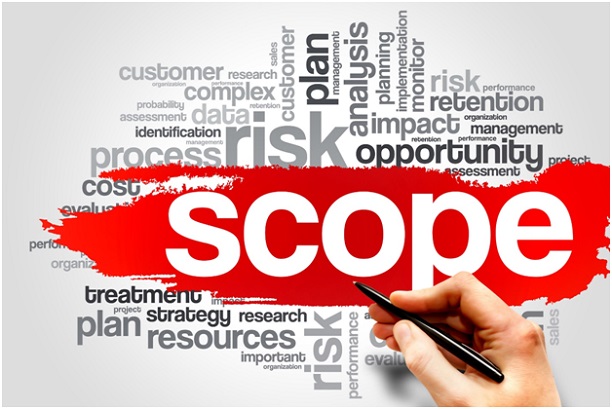
The first three clauses in ISO 9001:2015 are scope, references, and terms and definitions. These are informational clauses, rather than clauses that outline any kind of actions or requirements. This is something we will get into in a later sections.
The scope of the standard highlights the two basic tenets of what quality management is intended to achieve.
The standard encourages businesses to implement processes and systems to ensure consistent product and service output, while ensuring that customer satisfaction is enhanced through conformity and improvement.
Normative references provide a better understanding of the terms used in ISO 9001:2015 through relatable comparisons to the vocabulary that are used in the ISO 9000:2015 standard.
References for better understanding of basic terms by highlighting vocabulary and definitions from ISO 9000:2015. Refer to ISO 9000:2015 Quality Management Systems Fundamentals and Vocabulary.
Other related and applicable standards that you could refer to might include, among others:
These were the informational clauses, rather than clauses that outline any kind of actions or requirements. The following section will now focus on discussing the requirements in more detail.

The fourth clause in ISO 9001 outlines the general requirements for the entire quality management system as a whole.
Collate evidence to provide assurance that your organization is regularly, or as necessary, reviewing and updating information relating to its external and internal issues.
Although there is no requirement for documented information to define the context of the organization, your organization will find it helpful to retain the types of documented information listed below to help demonstrate compliance:
Reviewing your organization’s context should include interviews with senior management, questionnaires, surveys and research. Cross-functional input is essential for gaining the expertise to identify the full range of issues, such as finance, training, human resources, commercial, engineering and design, etc.
Learn more about 4.1 Context of the Organization.
Similar to the context review discussed above, cross functional input is vital, as certain functions will identify with particular stakeholders, for example procurement with suppliers, and sales with customers.
A workshop approach should be encouraged which can be undertaken independent to, or in conjunction with the context review workshop.
Once stakeholders and their requirements are identified, the next step is to consider which stakeholder requirements generate compliance obligations. Legal requirements should be identified before other requirements.
This process of adopting requirements will allow you to focus and coordinate on what’s important.
Learn more about 4.2 Understanding the Needs and Expectations of Relevant Stakeholders.
You will need to verify that your organization’s scope exists as documented information (which may be contained in the quality manual) in accordance with Clause 7.5.1a.
Verify that the organization’s scope has been established in consideration of organization’s boundaries and applicability of the quality management system.
Look for confirmation that your organization has determined the boundaries and applicability of the quality management system to establish its scope with reference to any external and internal issues referred to in 4.1 and the requirements of relevant interested parties referred to in 4.2.
The scope of your quality management system may include the whole of the organization, specific and identified functions within the organization, specific sections of the organization, or one or more functions across a group of organizations.
ISO 9001:2015 include specific requirements necessary for the adoption of processes when developing, implementing and improving a quality management system.
This requires your organization to systematically define and manage processes and their interactions so as to achieve the intended results in accordance with both the policy and strategic direction.
Existing operational procedures, work instructions and flow charts are valid examples of documented information and can be used to evidence the requirement for ‘documented information to support the operation of processes is being met’.
When an outsourced process is controlled through purchasing, there must be documented information to ensure that the processes are being controlled - using techniques like:
Learn more about 4.4 Quality Management System and its Processes

Management responsibility has to do, mainly, with customer commitment requirements. This is basically the company’s commitment to serving the customer and building a more loyal following.
This section also establishes a general focus of the company, in terms of the customer. In other words, the company is pledging to always keep the customer happy, and do what they can to improve their products, services, and procedures accordingly.
Without solid management commitment, you will not have a successful quality management system. This is not a commitment in words; it is the continuous and active demonstration to everyone in the organization that the need to meet customers' expectations is vital.
The actions required of Top management include:
Develop and support the quality management system by:
Implement and improve the quality management system by:
Customer focus involves determining customer requirements and ensuring that processes exist to meet the requirements and achieve customer satisfaction. Enhance customer satisfaction by ensuring that customer requirements are identified and cascaded.
Learn more about 5.1 Leadership and Commitment
Management responsibility also helps a company define a quality policy and objective guidelines, and provides help with QMS planning as a whole.
ISO 9001:2015 requires an organization’s policies to be appropriate to both its purpose and context. This means that once your organization has determined its context and the relevant requirements of its interested parties, Top management must review the policies in light of that information.
ISO 9001:2015 also requires that the policies are maintained as documented information, refer to Clause 7.5.1a. You should check whether the policies have been established communicated and understood throughout your organization. The policies must also be available to any relevant interested parties.
A quick and convenient way to promote and communicate the policy might be to create a shortened version of main policy; try condensing it to five key words or even a couple of short sentences.
This can be posted on bulletin boards in each department. You could even add it to the reverse side of staff security passes or ID badges.
Learn more about 5.2 Quality Policy
The definition of authority and responsibility in the workplace is another vital aspect of ISO 9001.
Each employee needs to know who is responsible for the various elements of the quality management system to ensure successful implementation, operation and maintenance.
You should develop and make available to all employees a list of personnel and their job descriptions, competence requirements, responsibilities, along with an organizational chart of employees as they relate to the QMS.
Learn more about 5.3 Organizational Roles Responsibilities and Authorities

Risks and opportunities flow directly from clause 4.1 and 4.2. Determine, consider, and where necessary, take action to address any risks or opportunities that might impact the quality management system’s ability to deliver conformance.
Addressing the risks and opportunities will ensure the quality management system is able to achieve its planned objectives!
The risks and opportunities should be relevant to the context of your organization (Clause 4.1), as well as, any interested parties (Clause 4.2). You should ensure that your organization has applied this risk identification methodology consistently and effectively.
Understanding the risks and managing them appropriately will enhance your organization’s ability to make better decisions, safeguard assets, and enhance your ability to provide products and services and to achieve your mission and goals.
Although developing and implementing a formal risk management process is not a requirement, it is encouraged that the identification and management of risks and opportunities are formally undertaken and documented. Consequence and likelihood tables should be used in conjunction with a risk level matrix.
Learn more about 6.1 Actions to Address Risk and Opportunities
An effectively implemented quality management system aligns the policies with strategic and management system objectives and provides the framework upon which to translate these objectives into functional targets and measures.
Establish and maintain documented quality objectives and indicators, at each relevant function and level within the organization. The objectives and indicators help establish an important link between the quality policy and the management programme.
The objectives and targets must be consistent with the quality policy. It is also important to ensure that the quality objectives and associated key performance indicators (KPIs) are mutually consistent.
It is important to ensure KPIs are meaningful to all key stakeholders including the customer(s), top management, supervisors and the staff who actually produce the products and services.
Properly designed and implemented, management programme should achieve the objectives and, consequently, improve your organization’s performance. The management programme must:
Establishing an action plan for each objective may require considerable effort on the part of the personnel at relevant levels within your organization.
To ensure the progress of the action plan and a coordinated effort, a target leader should be selected for each target who will be responsible for ensuring a target is achieved within the specified time-frame.
Learn more about 6.2 Quality Objectives
Changes are intended to be beneficial but they need to be carried out when determined by your organization as relevant and achievable. In addition, consideration of newly introduced risks and opportunities should also be taken into account.
To achieve the benefits associated with changes, your organization should consider all types of change that may occur. These changes may be generated, for example by:
Learn more about 6.3 Planning of Changes

It is really important that a business has the proper resources for everyone who is involved, no matter if they make purchases with the company or go to work there every day. An organized and professional workplace is paramount to the successful implementation of a quality management system!
There are six sub-clauses in clause 7.1, and include general (7.1.1), people (7.1.2), infrastructure (7.1.3), work environment (7.1.4), monitoring and measuring resources (7.1.5), and organizational knowledge (7.1.6).
Ensure that your organization has determined and provided the resources needed for the establishment, implementation, maintenance and continual improvement of the QMS. Resources will often include raw materials, infrastructure, finance, personnel and IT, all of which can be either internally or externally provided.
Check that your organization has identified which resources and the staff necessary for the effective implementation of the QMS and for the operation and control of its processes.
Most organizations determine resource requirements during management review meetings; you should review the management review minutes for evidence of resource allocation.
Provide and maintain infrastructure necessary to achieve product conformance:
Ensure that documented information is maintained in order to demonstrate suitability of monitoring and measuring equipment. While this is not required, all equipment requiring calibration must be identified
Sources of internal knowledge often include the organization’s intellectual property; knowledge gained from experience; lessons learned from failures and successes; capturing and sharing undocumented knowledge and experience; the results of improvements in processes, products and services.
Sources of external knowledge often include other ISO standards; research papers; conferences; or knowledge gathered from customers or external parties.
Learn more about 7.1 Resources
Identification of employee training needs is typically the first step in developing a competency-based training programme. In addition to existing workers, new hires, temporary workers and outside contractors must be included when identifying training needs.
After developing a list of these employees, the management representative or human resources manager should establish the appropriate training programme for each person based on the type of employee interaction with each significant impact, hazard or risk.
Even though some personnel may have the same job, the type or level of training may vary according to each person’s past education, training, and experience.
Training options may be as simple as on-the-job training, administered by senior/experienced members; formal training, including classroom instruction; training provided by external consultants. For some situations, commercially available training courses may be another alternative.
The awareness training does not need to follow the format of classroom sessions, techniques can include short training segments supplemented with videos and hands-on demonstrations that address key elements of the QMS.
Other methods to promote and reinforce the quality awareness training sessions include communication via electronic bulletin boards, posters, newsletters and informational meetings.
Awareness training is intended to provide an overview of your organization’s policy, objectives and targets, and overall QMS.
All well as briefing employees during introductory presentations, try using a combination of other methods to promote awareness, such as posters placed on notice boards and leaflets with pay-slips, etc. Use training sessions to inform employees of the plan, how they will be expected to contribute.
Communications may relate to your organization’s ongoing compliance to various obligations, milestone achievements, or sustainable resourcing.
Communication is the key; communicate goals, plans, progress and milestones. Listen first then ask for feedback. Lack of communication seems to be one of the main root causes for errors in business.
Keep people informed of the progress of the project; e.g. what’s been done, what’s to be done next and how the project is progressing against the plan.
Internally, your organization needs to communicate information relevant to the QMS amongst all levels and functions, including information on any change, as appropriate, and have to establish a mechanism to enable all persons performing work under the organization’s control to contribute to continual improvement.
A robust document control process invariably lies at the heart of any compliant management system; almost every aspect of auditing and compliance verification is determined through the scrutiny of documented information.
With this in mind, it becomes apparent that the on-going maintenance of an efficient document management system must not be overlooked!
Departmental managers should always be responsible for promoting good documented information practices in their area whilst supporting overall compliance to the requirements.
Individuals and their line managers should be responsible for the information that they create, as well as being responsible for their retention and disposal in line with legislative requirements and organizational needs.
The terms ‘documented procedure’ and ‘record’ used ISO 9001:2015 have both been replaced by the term ‘documented information’, which is defined as information required to be controlled and maintained by an organization, as well as the medium on which it is contained.
Operational procedures, work instructions, flow charts, process maps, signs, placards, container markings, labels etc. are all examples of ‘documented information’. Documented information can be in any format and media, and from any source.
organizations should determine the level of documented information necessary to control their QMS. ‘Access’ can imply a decision regarding the permission to view the documented information only, or the permission and authority to view and change the documented information.
Learn more about 7.5 Documented Information

Clause 8 is comparable to the requirements from ISO 9001:2008 Clause 7.1 – Product Realization Planning, but it has been extended to include implementation and control, as well planning, evidence of controls, acceptance criteria and resources to address risks and opportunities.
For those risks and opportunities that your organization has identified, you should seek evidence that these actions have been integrated into the quality management system.
These actions should be verifiable at process level – for example, evidence of controls, acceptance criteria and resources to address the risks and opportunities, as such this clause links to the following clauses: 4.4, 6 and 8.4.
Meeting customer identified needs is a key objective. Establish effective arrangements for providing the customer with product information, a means of handling inquiries and orders and a method for handling customer comments that includes both compliments and complaints, as such this clause links to the following clauses: 5.1, 7.4 and 8.4.
Establish processes for communicating with your customers:
Identification of any applicable statutory and regulatory requirements in terms of the products and services being offered is crucial.
The sub-clause mandates that your organization should not issue a quotation or accept an order until it has been reviewed to ensure requirements are defined, and that the organization has the capability to meet the defined requirements.
It goes on to require that records of the review and any subsequent actions be maintained.
Where changes in requirements occur, ensure that all relevant documented information that relates to the changed product or service requirements, is amended and those relevant personnel are made aware of the changed requirements.
If the customer’s requirements have changed, all related documents must be amended and the relevant personnel must be informed.
Learn more about 8.2 What are the Requirements for Products and Services
This clause focuses on the need to develop, implement and maintain a design and development process that is appropriate to the requirements for the provision of products and services.
Many companies perform some enhancements or minor reconfigurations to existing, mature designs; such organizations may have to introduce a comprehensive design system and related or processes.
Design plans must specify the design and development stages, activities and tasks; responsibilities; time-line and resources; specific tests, validations and reviews; and outcomes.
You should also ensure that your organization has retained documented information to confirm the identified design and development requirements were met and that design reviews were undertaken.
Define which inputs are required to carry out the design and development process. The inputs should be determined according to the design and development activities. For example, which employees are required, or what information is required for every step of the development.
The verification could consist of calculations, simulations, prototype evaluation, tests or comparison against samples.
You must maintain records of design verification as these records will indicate the results of verifications and determine any necessary corrective actions.
Validation is similar to verification, except this time you should check the designed product under conditions of actual use.
The design and development output is the result of design and development process. The output is a clear description of the product, containing detailed information for production. Design and development outputs must reconcile with design and development inputs.
It is as important to control design changes throughout the design and development process and it should be clear how these changes are handled and what effects they have on the product.
Ensure control over design and development changes, design changes must be identified, recorded, reviewed, verified, validated, and approved.
Learn more about 8.3 Design and Development of Products and Services
organizations need to identify which materials and services that they buy can affect the quality of their products. Then they need to establish criteria for selection of suppliers that can provide these materials and services.
Purchased product is any product procured by an organization from another source that is incorporated or used in the production of the final product. Note that products need not be procured from an 'independent source', in some cases sister companies supply each other and are not totally independent.
You could consider dividing your suppliers into groups based on the product or service they provide and what effect it has on the quality of your products or processes, e.g. level I/II/III/etc.
Based on those categories, you can define the criteria for supplier evaluation and approval. You are free to define your supplier levels and approval parameters accordingly, but, whatever rationale is opted for, it should be properly documented.
There is no ‘right way’ for vetting suppliers. To meet the intent of the clause you simply need to establish a process with properly documented criteria which are based upon customer requirements. ISO 9001 requires that the purchasing documentation contains the correct information before it is issued to a supplier.
Learn more about 8.4 Control of Externally provided Processes, Products and Services
You should seek and record evidence that your organization has controlled the conditions by which products or services are provided, for example by ensuring that monitoring and measurement take place at appropriate points in the production process to ensure that both the processes themselves and the process outputs meet the organization’s acceptance criteria.
There are several ways of identifying products. The most obvious is using tags or stickers with part numbers, bar codes, job numbers, etc. The identification may be engraved in the product itself, or the product may simply be marked by a color.
Where traceability is a requirement, you should expect to see that your organization is controlling and recording the unique identification of the product.
Check that your organization communicates with its customers in regard to the handling and treatment of their property. You should also check that contingency plans and, where relevant, actions are undertaken when non-conformities occur with customer property.
Preserve the product during internal processing and delivery to the intended destination. Preservation, packaging and other product specific handling methods are likely to an output of the product design process.
Post-delivery activities can include actions under warranty provisions, contractual obligations such as maintenance services, and supplementary services such as recycling or final disposal.
organizations need to make changes in a thoughtful manner and to consider the potential impact to other process, products and possibly the customer.
Respond to unplanned changes that are considered essential in order to ensure that products or services continue to meet their specified requirements, in such a way that conformity with requirements is maintained.
Learn more about 8.5 Product and Service Provision
The release of product or delivery of service must not be completed until the planned requirements have been met. ‘Release’ of product may include, according to product planning and the verification stages, release to the next operation, release to an internal customer, release to final customer, etc.
Every once in a while, there will be some product or service produced by the company that is not up to the standard protocol that is defined by the ISO 9001:2015 standard. This is also known as a non-conforming product/service, or a non-conformity.
If you have manufactured a product, inspected it and found it to be out of specification, it is most likely to be deemed nonconforming product. In some instances, you will have to scrap the defective product but in other situations you may be able to do some remedial work and bring it back into specification.
Capture data on nonconformities and feedback information at the appropriate management level, for the effective definition and implementation of corrective actions.
Learn more about 8.7 Control of Nonconforming Outputs

The measurement, analysis, and improvement clause allows the company personnel to step back after executing their product or service, and see how the customer has reacted to these positive changes.
Monitoring and measuring QMS operations and activities will establish a mechanism to ensure that your organization is meeting its policies, objectives and targets. In order to meet this requirement, your organization must perform six steps:
Establish the monitoring and tracking criteria for each activity that has a significant risk and review the action plan. You should incorporate any monitoring and measurement information to cover these same activities.
Implemented a consistent and systematic approach to dealing with customer feedback and is obtaining information on customer perception.
Just collecting data on customer perceptions is not sufficient, you should seek and record evidence that your organization has analyzed and evaluated customer data and that conclusions have been made with regard to the effectiveness of the QMS.
Ensure there are defined responsibilities for logging and tracking customer complaints, clearing issues, determining the root-causes of problems, and actions to address them.
Analyze and evaluate data from both internal and external sources such as quality records, monitoring and measuring results, process performance results, objectives, internal audit findings, customer surveys and feedback, 2nd or 3rd-party audit results, competitor and benchmarking information, product test results, complaints, supplier performance information, etc.
Learn more about 9.1 Analysis of Data
These sub-clauses provide a clear framework for planning and conducting internal audits. The internal audit process is a primary tool ensure the QMS is operating effectively.
During the early stages of implementing ISO 9001:2015, or any other management system standard, the internal audit programme often focuses on ensuring that any compliance issues or non-conformities are discovered and rectified prior to the Certification Body assessment.
However, once your organization becomes certified, the audit programme must evolve. The focus of the internal audit programme should be re-directed, away from 'elemental' compliance with ISO 9001:2015, to an audit strategy that considers the 'status and importance' of each process comprising the quality management system.
If your current internal audit programme been developed on an annual calendar that merely forecasts which aspects of your quality management system are going to be audited, you should stop!
Begin programming your internal audits by basing the audit frequency upon current process performance data, feedback from customers, etc.
Learn more about 9.2 Internal Auditing
Here's what ISO 9001:2015 is really all about: defining a policy, creating a plan devising with relevant objectives. Implement the QMS according to the plan, begin auditing, monitoring and measuring performance against the plan and reacting to your findings.
Bi-annual management reviews are insufficient in frequency to be able react to any issues effectively. Performance metrics should be monitored with varying frequencies, some hourly, some daily, some weekly and some monthly.
Management cannot wait for six months to respond, if they do, it will be too late. Every time management convenes to review and react to performance, it is considered as a management review.
Whether they are reviewing an individual's performance, departmental programmes and projects, etc., this should be considered as valid management review.
Some companies have multiple review levels, whereby, each review may require multiple subjects and rely upon multiple metrics as inputs. Sometimes subjects are reviewed at more than one level, e.g. production numbers might be reviewed by the production teams during daily production meetings and then by senior management, possibly weekly.
Top management might conduct weekly meetings in which they review metrics and objectives to determine if any corrective action is required. The process owner is then responsible for reporting close out progress in the meeting a week later.
Management review meeting minutes should be retained as documented information!
Learn more about 9.3 Management Review

The final clause in the ISO 9001:2015 standard focuses mainly on improvement of the company. While it is true that you can go through the entire process of ISO certification to get the final stamp of approval from the organization, you won’t be able to keep it for long if you ignore the guidelines in this clause.
Improvement often does not take place on a ‘continual’ basis. Sometimes improvement can be affected reactively through corrective actions, incrementally overtime.
Look out for objective evidence that improvement is taking place. However, while improvement does not need to be continuous, it does need to be evidenced as occurring.
Your organization is required to take whatever action is necessary to control and correct the non-conformity, and to deal with any resulting impact by determining what caused the nonconformity and considering whether the potential for a similar problem remains.
This is done by considering whether any further action is required to prevent a similar nonconformity arising at the same place or occurring somewhere else, at some point in the future and by determining if similar non-conformities have occurred elsewhere; and consequently, whether it needs to take similar corrective action.
Taking appropriate action to address the effects of the problem may require a simple correction by the process owner or operator where it was discovered, or, if a major failure or defect exists, more significant levels of resource would be needed for problem solving and corrective action.
Learn more about 10.2 Corrective Action
Determine whether your organization identifies improvement opportunities and QMS under-performance using the data output from its processes, such as from analysis and evaluation, internal auditing, management review, and the use of appropriate tools and methodologies to support validate findings.
Improving your business will include assessing everything that is going on, deciding how you can make it better, and implementing those positive changes. This does not necessarily mean that anything is wrong with what you are doing, only that you want to get better every day.
The PDCA cycle is a perfect way of introducing continual improvement to your organization’s activities. Each step to improvement can be defined by four sub steps, Plan, Do, Check and Act:
Learn more about 10.3 Continual Improvement
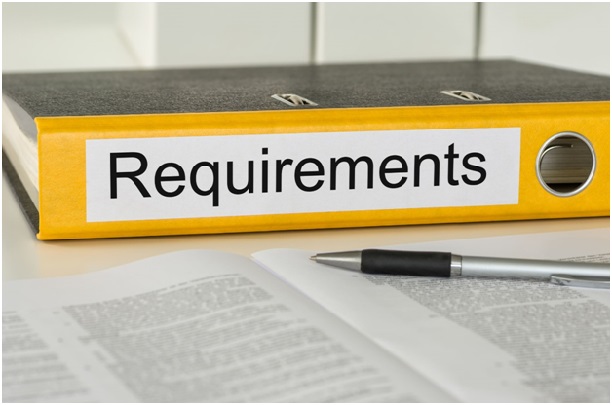
So, now that you have read through the names of all 10 ISO 9001 clauses, as well as a brief explanation of what each one entails, you might be wondering if the clauses are also requirements.
If you know anything about ISO 9001, then you probably understand how specific it can get.
When a business wants to become certified with ISO 9001, they are required to abide by a long list of very detailed processes that include defining the scope, performing surveillance and analysis, and going through internal audits before they can be considered ISO 9001 accredited.
With that being said, it is justified to assume that you must follow all of these standards line by line as a business owner, in order to gain and hold onto your ISO 9001 certification.
To clear this up, take a look at the list down below to find out the answer to the questions of whether or not all ISO 9001 clauses are requirements, and which ones are mandatory, if not.
First of all, not all 10 clauses of ISO 9001 are requirements for the business. The only mandatory clauses are everything between 4-10. Clauses 1, 2, and 3 are not requirements.
At this point, you might be wondering why the first three clauses are excluded from the certification requirements. If they are not required for certification, then what is the point of even reading them, right?
Clauses 1-3 are not requirements, only due to the fact that their purpose is to provide general information and terminology that will be used throughout the remainder of the standard.
In other words, clauses 1,2, and 3 of ISO 9001 do not outline any actionable requirements at all, making them non-mandatory for company personnel.
To recap on what was discussed in the previous section and provide a more clear distinction between the clauses, the list down below will highlight the mandatory clauses of ISO 9001.
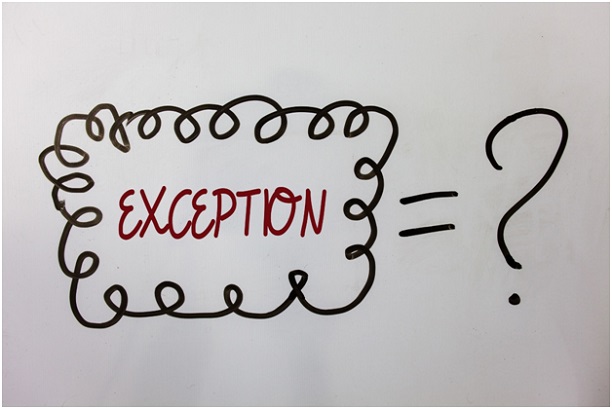
After discussing the ISO 9001 clauses that are mandatory requirements, there is still the question of what a requirement necessarily means.
For all of the required clauses, must a business owner and company personnel follow everything line by line? Generally, the answer to this question is yes, but there is one small exception, which is contained in Clause number 7.
Let’s take a closer look at this clause, in particular. Refer to the list down below to get a detailed outline on the Product Realization section of the ISO 9001:2015 standard.
The design and development clause consists of a six-step process, beginning with planning. This is when the company personnel decides on what their product or service output will consist of.
During this time, the requirements for the product will be defined. This includes what it is supposed to do and how it will be executed. The same process goes for services as well, but in a slightly different manner.
Then, the product will be designed and developed before the products are purchased and everything is produced and supplied to customers.
Following these standard procedures, the company personnel must maintain control of the equipment, by measuring inventory and resources, along with closely monitoring everything else.
As you might have caught already, there are several different versions of the ISO 9001 standard, with two in particular.
This is due to the fact that the ISO 9001 quality management system is constantly changing and evolving to be more beneficial to everyone who is involved in a business, from the owner and employees to the regular customers.
While the years are steadily progressing, so is the ISO 9001 standard. Let’s take a look at what the two most recent versions of ISO 9001 are, before we get deeper into each one.
The two most recent versions of the ISO 9001 standard include ISO 9001:2008 and ISO 9001:2015. The older one was updated in the year 2008, while the most up to date came out in 2015.
With these changes going on, there were a lot of alterations in the amount of clauses between the two, as well as which clauses are considered to be requirements. Let’s start with ISO 9001:2008.
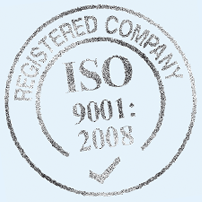
The 2008 version of ISO 9001 contained 8 total clauses, instead of the 10 that are contained in ISO 9001:2015.
Out of the total 8 clauses in ISO 9001:2008, there were only 5 required clauses, which were 4-8.
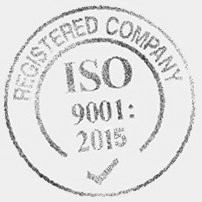
The 2015 version of ISO 9001, on the other hand, has 10 total clauses - meaning that two of them were recently added on to the standard in order to improve the system further.
Out of all 10, there are a total of 7 requirements, also meaning that the additional clauses became mandatory to ISO 9001 users.
ISO 9001:2015 has more individual clauses as well as more requirements than the older version from 2008.
Our QMS templates helped many businesses achieve certification in 2023, why not yours in 2024?
Further ISO 9001 QMS Documentation
- The ISO 9001 Quality Manual - Everything you Need to Know
- How Can a QMS Template Help My Small Business
- 5 Reasons to Use a Quality Management System Template
- What are the ISO 9001 requirements?
- How many Clauses are in ISO 9001 Certification? (Hint, there are 10!)
- What Are The ISO 9001 Mandatory Procedures?
Updated: 19th April 2024
Author: Richard Keen

Richard is our Compliance Director, responsible for content & product development.
But most importantly he is ISO's biggest fanboy and a true evangelist of the standards.
Learn more about Richard